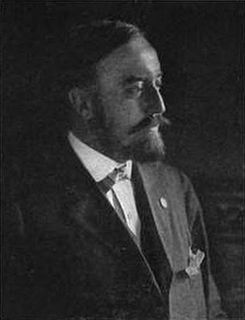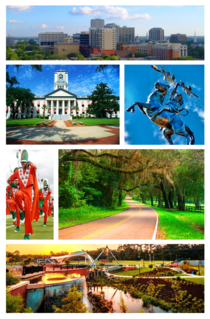
Tallahassee is the capital city of the U.S. state of Florida. It is the county seat and only incorporated municipality in Leon County. Tallahassee became the capital of Florida, then the Florida Territory, in 1824. In 2017, the population was 191,049, making it the 7th-largest city in the U.S state of Florida, and the 126th-largest city in the United States. The population of the Tallahassee metropolitan area was 382,627 as of 2017. Tallahassee is the largest city in the Florida Panhandle region, and the main center for trade and agriculture in the Florida Big Bend and Southwest Georgia regions.

Leon County is a county located in the Panhandle of the U.S. state of Florida. It was named after the Spanish explorer Juan Ponce de León. As of 2017 Census estimates, the population was 290,292.
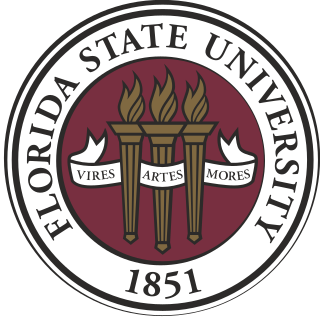
Florida State University is a public space-grant and sea-grant research university in Tallahassee, Florida. It is a senior member of the State University System of Florida. Founded in 1851, it is located on the oldest continuous site of higher education in the state of Florida.

Collegiate Gothic is an architectural style subgenre of Gothic Revival architecture, popular in the late-19th and early-20th centuries for college and high school buildings in the United States and Canada, and to a certain extent Europe. A form of historicist architecture, it took its inspiration from English Tudor and Gothic buildings. It has returned in the 21st century in the form of prominent new buildings at schools and universities including Princeton and Yale.

The University of Florida Campus Historic District is a historic district on the campus of the University of Florida in Gainesville, Florida. The district, bounded by West University Avenue, Southwest 13th Street, Stadium Road and Gale Lemerand Drive, encompasses approximately 650 acres (2.6 km2) and contains 11 listed buildings plus contributing properties. On April 20, 1989, it was added to the National Register of Historic Places. On June 24, 2008, additional information was approved which resulted in the addition of 6 contributing properties

Rolfs Hall is an historic building on the campus of the University of Florida in Gainesville, Florida, United States. It is located in the northeastern section of the campus. It was designed in the Collegiate Gothic style by William Augustus Edwards and completed by Rudolph Weaver, who succeeded him as architect for the Florida Board of Control. On September 11, 1986, it was added to the U.S. National Register of Historic Places. Rolfs Hall is named for Peter Henry Rolfs, who was dean of the College of Agriculture from 1915 to 1920.

Norman Hall is an historic academic building on the eastern campus of the University of Florida in Gainesville, Florida. It was designed by architect Rudolph Weaver in the Collegiate Gothic style, and built in 1932. It originally housed the university's research and development primary and secondary schools, but now is the principal building of the university's College of Education. It is located on U.S. 441, near the southwest corner of S.W. 3rd Avenue and S.W. 12th Street in Gainesville. On January 26, 1990, it was added to the U.S. National Register of Historic Places.

The Florida State Seminoles football team represents Florida State University in the sport of American football. The Seminoles compete in the NCAA Division I Football Bowl Subdivision (FBS) of the National Collegiate Athletic Association (NCAA) and the Atlantic Division of the Atlantic Coast Conference (ACC). The team is known for its storied history, distinctive helmet, fight song and colors as well as the many traditions associated with the school.
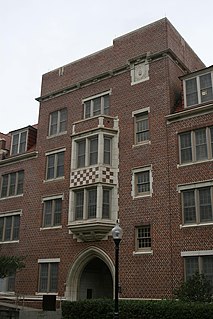
Fletcher Hall, originally called North Hall, is an historic dormitory building on the campus of the University of Florida in Gainesville, Florida, in the United States. It makes up half of the "F" in the "U.F." in the Murphee Area. The "U.F" in the building design can be seen from an aerial view. It was designed by Rudolph Weaver in the Collegiate Gothic style, was built in 1938 and was named for Duncan U. Fletcher, longtime U.S. Senator from Florida. It was renovated in 1984.

Sledd Hall is an historic student residence building in Murphree Area on the northern edge of the University of Florida campus in Gainesville, Florida. Built in 1929, the dormitory was designed by architect Rudolph Weaver in the Collegiate Gothic style. It is a contributing property in the University of Florida Campus Historic District.

The Florida–Florida State football rivalry, occasionally called the Sunshine Showdown, is an American college football rivalry between the teams of the two oldest public universities of the U.S. state of Florida: the University of Florida Gators and Florida State University Seminoles. Although both universities participate in a range of intercollegiate sports, the competition between the Gators and the Seminoles has most often focused on football.

The history of Florida State University dates to the 19th century and is deeply intertwined with the history of education in the state of Florida and in the city of Tallahassee. Florida State University, known colloquially as Florida State and FSU, is one of the oldest and largest of the institutions in the State University System of Florida. It traces its origins to the West Florida Seminary, one of two state-funded seminaries the Florida Legislature voted to establish in 1851.
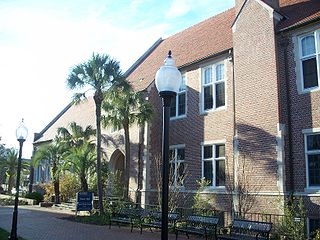
Dauer Hall is a historic building on the campus of the University of Florida in Gainesville, Florida, in the United States.

The Leigh Hall, originally known as the Chemistry-Pharmacy Building, is an historic building on the campus of the University of Florida in Gainesville, Florida, in the United States. It was designed by Rudolph Weaver in the Collegiate Gothic style and was built in 1927. In 1949 the pharmacy college moved to new quarters and the building was renamed Leigh Hall for Townes R. Leigh, longtime chairman of the chemistry department. A west wing was added in 1949 and the building was renovated in 1994.

Murphree Hall is a historic student residence building located in the Murphree Area on the northern edge of the University of Florida campus in Gainesville, Florida. It was designed by architect Rudolph Weaver in the Collegiate Gothic style and completed in 1939. The building was named for Albert A. Murphree, the university's second president, who served from 1909 to 1927. Major renovations, which included adding air conditioning, were completed in 2005, and the hall was rededicated and open for that fall semester.

Walker Hall, originally known as the Mechanical Engineering Building, is an historic classroom building on the campus of the University of Florida in Gainesville, Florida, in the United States. It was designed by Rudolph Weaver in the Collegiate Gothic style and was built in 1927 It was later named for Col. Edgar S. Walker, a civil engineering professor.

Student housing at Florida State University is governed by the Office of University Housing, and provides housing for undergraduates, graduate students, and professional students on and off-campus. Overall about 85% of first time in college students live in residence halls. In addition over 20% of all undergraduates live in student housing.
The James D. Westcott Building is a historic building on the campus of The Florida State University in Tallahassee, in the U.S. state of Florida. The Westcott Building currently houses the chief administrative offices for Florida State University and is the primary focal point of the campus as seen down College Avenue. The building is also home to Ruby Diamond Auditorium. It is known for its distinctive appearance.

The history of the University of Florida is firmly tied to the history of public education in the state of Florida. The University of Florida originated as several distinct institutions that were consolidated to create a single state-supported university by the Buckman Act of 1905. The earliest of these was the East Florida Seminary, one of two seminaries of higher learning established by the Florida Legislature. The East Florida Seminary opened in 1853, becoming the first state-supported institution of higher learning in the state of Florida; the University of Florida traces its founding date to that year.
Guy Chandler Fulton was an American architect known for his work on numerous buildings at the University of Florida while he was State Architect of Florida.






